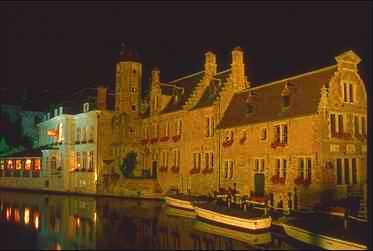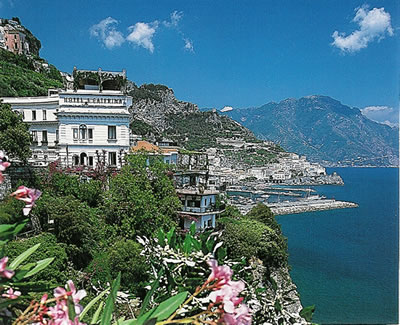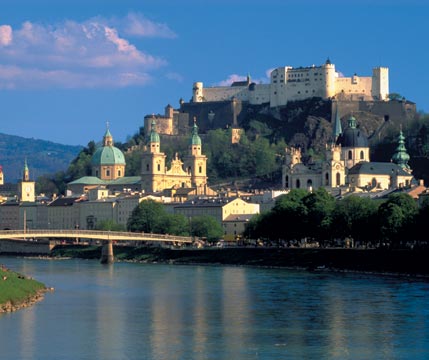 As WebVisionItaly.com correctly predicted a few weeks ago here, Chrysler will file bankruptcy today in New York due to the real-world nature of business, which includes the right of debt-holders to have a fair hearing in court regarding the disposition of Chrysler's assets vis-a-vis the debt's right to collect its collateral because of Chrysler's bankruptcy filing and debt-payment default. There are also fat cats who own CDS that made the bet Chrysler would enter bankruptcy that stand to make big bucks once the filing is official. The debt and the CDS (credit default swap) holders are not going to pushed around or pushed out of profits by President Obama or Congress. They are going to collect, and quite possibly AIG will need another bailout to payoff all the hedge funds who bet correctly that Chrysler would enter bankruptcy and therefore are due a big payout.
As WebVisionItaly.com correctly predicted a few weeks ago here, Chrysler will file bankruptcy today in New York due to the real-world nature of business, which includes the right of debt-holders to have a fair hearing in court regarding the disposition of Chrysler's assets vis-a-vis the debt's right to collect its collateral because of Chrysler's bankruptcy filing and debt-payment default. There are also fat cats who own CDS that made the bet Chrysler would enter bankruptcy that stand to make big bucks once the filing is official. The debt and the CDS (credit default swap) holders are not going to pushed around or pushed out of profits by President Obama or Congress. They are going to collect, and quite possibly AIG will need another bailout to payoff all the hedge funds who bet correctly that Chrysler would enter bankruptcy and therefore are due a big payout.Hedge funds invest in businesses for a variety of reasons, one of which is to seize assets in bankruptcy court when management's rosy business sceanarios that secured the debt do not come to fruition. It is fairly common for hedge fund investors to make a bet that a company is going down the tubes, at which point a hedge fund invests in a company's debt to fund management's last-ditch efforts. Hedge funds grant the last wish while collaterized the debt with the companies assets with an eye towards seizing these assets once management's failures are manifest. And desperate management does desperate things like use assets to collaterize debt, as Robert Nardelli, Chrysler CEO and Home Depot fame, did with Chrysler's assets to the tune of $8 billion.
Despite Congress' recent unwillingness to accept capitalism in all its messiness, the hedge funds play hard ball to, which they did today, teaching the President and Congress that U.S. business people still exist who will not cave to Washington's nanny state moves. And of course, just as the CDS winners were paid off after the banks collapsed with government funds run through AIG, the Chrysler CDS holders who bet on bankruptcy will be getting a big pay day by close of business today.
President Barack Obama said today that Chrysler LLC will file a historic bankruptcy shortly, backed by up to $3.5 billion in new government aid designed to allow a Chrysler-Fiat partnership to emerge from court in 30 to 60 days.
The move also sends a strong signal to bondholders at General Motors Corp. that the Obama auto task force will act on its vow to take GM into a similar bankruptcy if they do not agree to swap their GM debt for shares in a reworked GM.
Under Chrysler's bankruptcy, to be filed in New York in a matter of hours, the two automakers along with the UAW, Fiat and a majority of lenders will ask a judge to force a swap of $6.9 billion in debt for $2 billion in cash. The number of Chrysler dealers, now about 3,200, will be reduced through bankruptcy, but the administration officials did not say how many would be eliminated.
The agreement with Fiat will allow the Italian company to take a 20% stake in Chrysler that will grow as Fiat meets certain milestones, such as building new models in Chrysler plants. In addition to the $3.5 billion in financing to keep Chrysler operating while in bankruptcy, the government will also provide up to $4.7 billion for the new Chrysler once it emerges.
The Obama administration will also give additional aid to GMAC so that it can take over lending to Chrysler's customers and dealers from Chrysler Financial, which the government has deemed not viable. And the Canadian government will also provide new financial aid to Chrysler's operations in that country in return for 2 per cent in the new Chrysler.
The administration portrays its "surgical" bankruptcy of one of Detroit’s major automakers as just a legal chore, rather than the threat to Chrysler’s existence and the entire U.S. auto industry that Chrysler itself had described less than three months ago. Administration officials said Chrysler would operate as usual during bankruptcy, and that no additional job cuts were anticipated as of now.
The government will take a stake in the company and have a say in helping Chrysler and Fiat select a new board of directors. Chrysler Chief Executive Robert Nardelli has said he would step down after the partnership was cemented.
The decision to take Chrysler into bankruptcy came after three lenders -- Oppenheimer Funds, Perella Weinberg Partners, and Stairway Capital – balked at the original $2-billion offer, as well as an increase of $250 million from Treasury on Wednesday evening. The White House and Michigan’s congressional delegation pressed the holdouts to agree by 6 p.m. Wednesday, but no deal was reached.
The administration "was willing to give the holdout creditors a final opportunity to do the right thing," an administration official said. But "the agreement of all other key stakeholders ensured that no hedge fund could have a veto over Chrysler's future success."
The lack of an agreement will not "impede the new opportunity Chrysler now has to restructure and emerge stronger going forward," the official said.
The U.S. Treasury had guaranteed the warranties of Chrysler and General Motors Corp. in part to assuage worries of customers who might think twice before buying from a bankrupt automaker. GM has a June 1 deadline to reach its own debt agreement or go through a similar move.
President Obama said Wednesday that “even if they (Chrysler) ended up having to go through some sort of bankruptcy, it would be a very quick type of bankruptcy and they could continue operating and emerge on the other side in a much stronger position.”
The UAW late Wednesday night overwhelmingly ratified cost-cutting changes in its labor contract that freeze wages for Chrysler's 26,000 U.S. hourly workers and slash more than $5 billion from what Chrysler was to pay into a retiree health care trust next year. That trust would own 55% of the new Chrysler, while Fiat would start with a 20% stake and the government would own another large portion.
Fiat will ratify its agreement with Chrysler today to share technology and engineering resources Chrysler and the UAW have valued at $8 billion to $10 billion.
The Obama auto task force had been pressing for GMAC LLC to step into the role held by Chrysler Financial. It was not immediately clear how much additional aid or regulatory help GMAC would receive for taking on the role, nor what would happen to Chrysler Financial.
Another lingering question: whether Fiat would sell vehicles under its own brands through Chrysler, even as the government pressed GM to cull its brands due to shrinking U.S. market share. WebVisionItaly.com is hopeful Fiat will launch its brands under its name in North America, although Chrysler's Nardelli up to now has stated Chrysler wants to keep its skin with the Fiat underneath, maybe to placate the taxpayers and the union who are ultimately paying for this business gamble.
To follow news and updates about Italy and new program alerts from WebVisionItaly.com, follow the Motorino Man on http://twitter.com/italytravel.
Visit msnbc.com for Breaking News, World News, and News about the Economy

















































